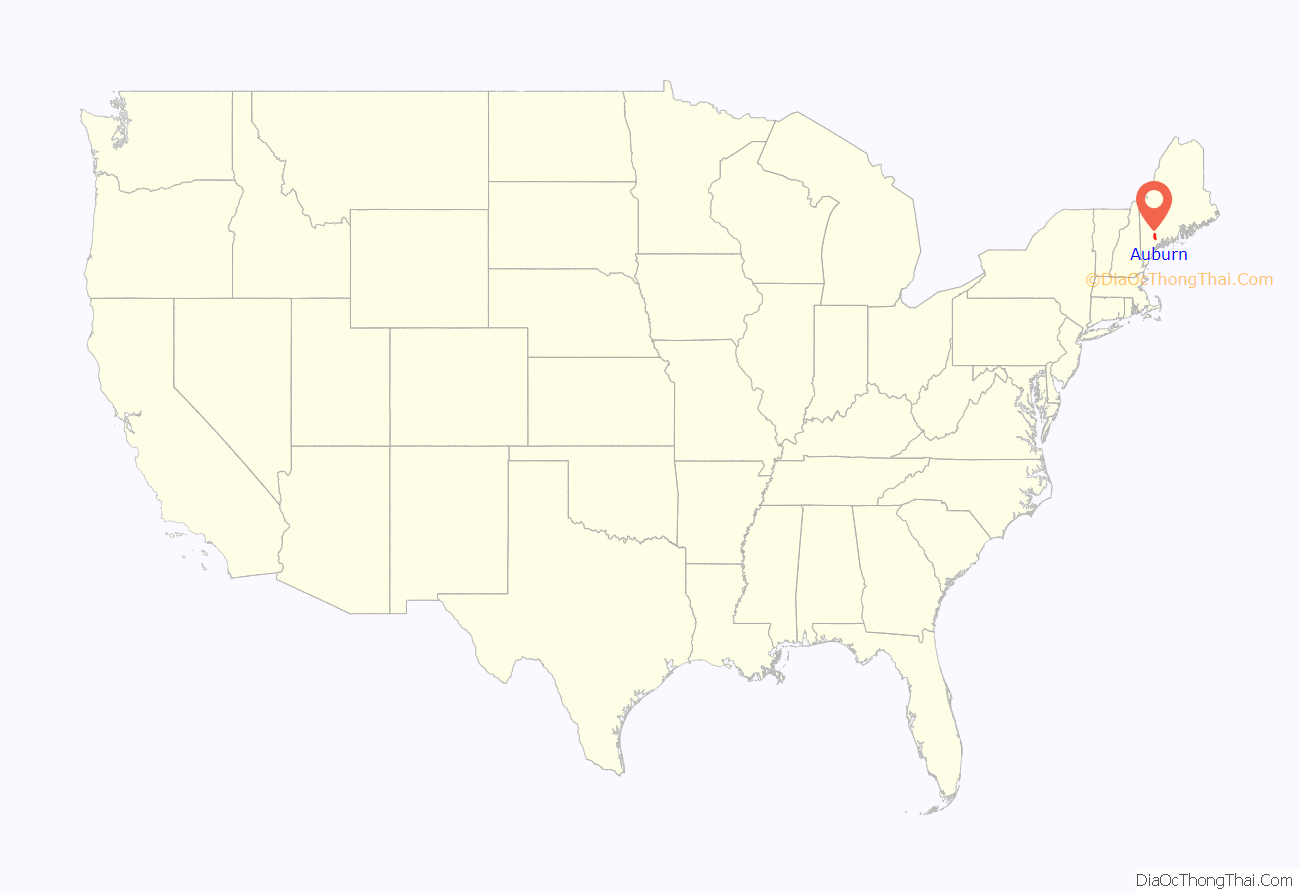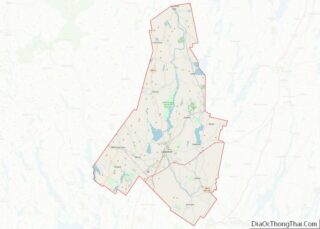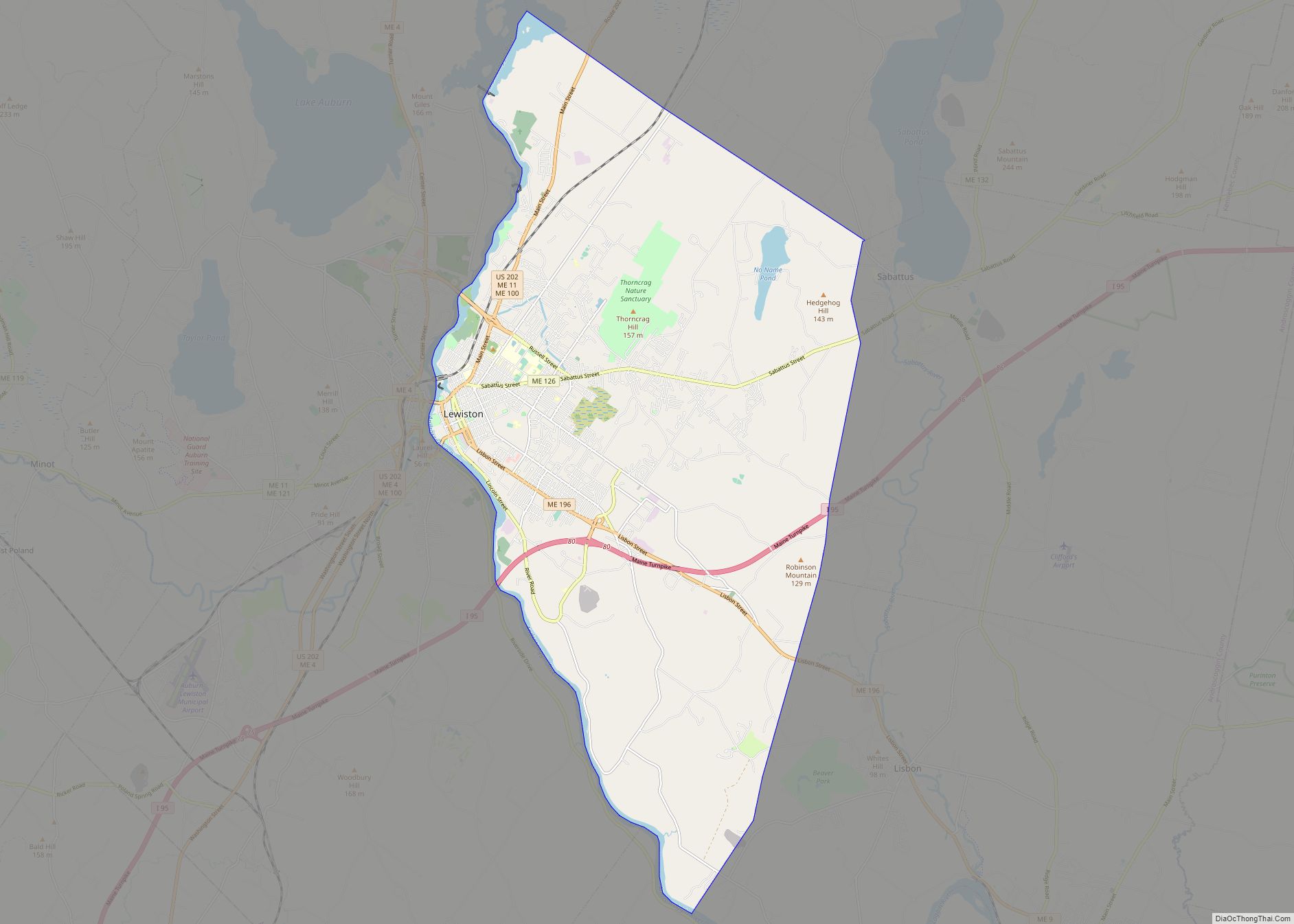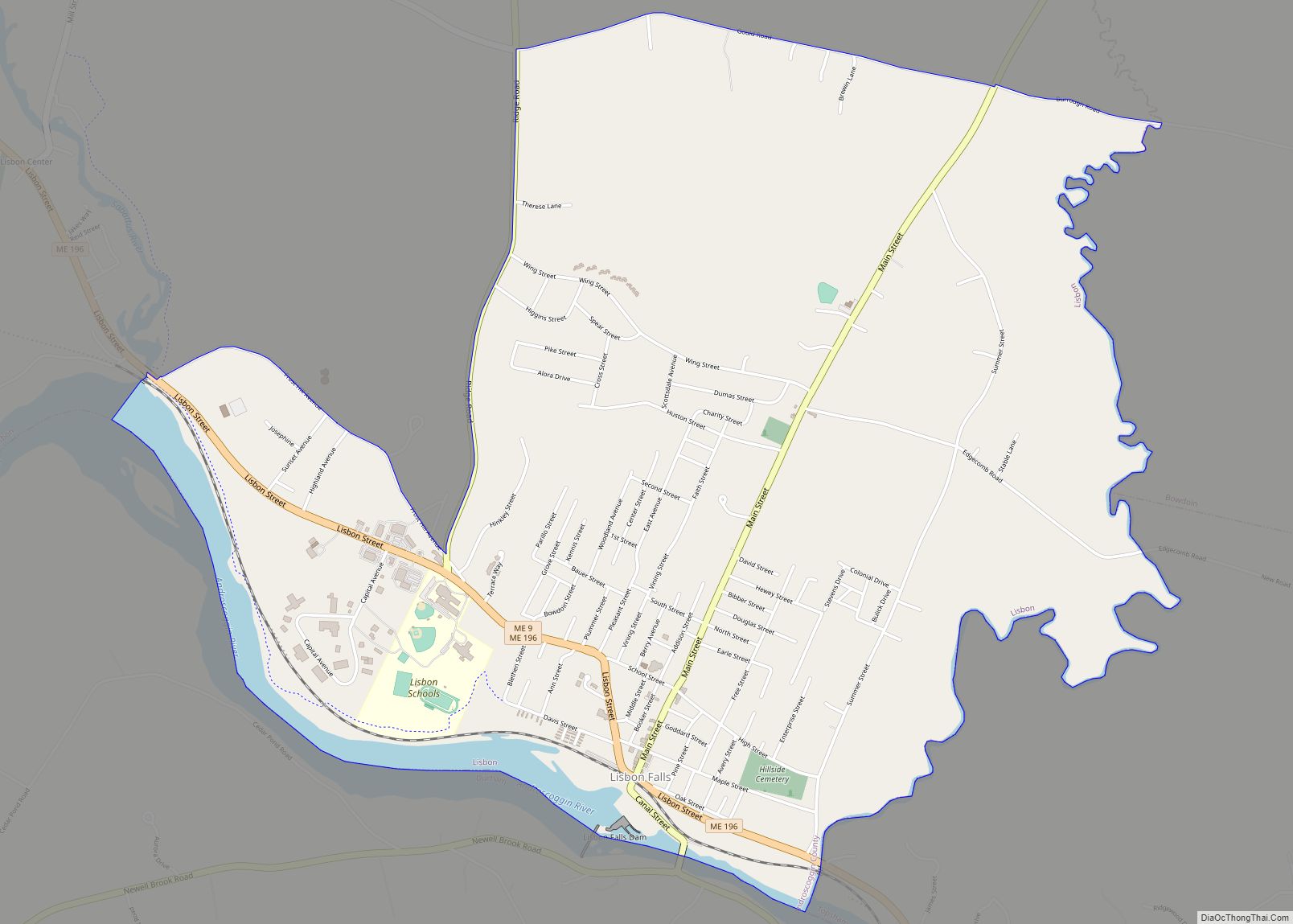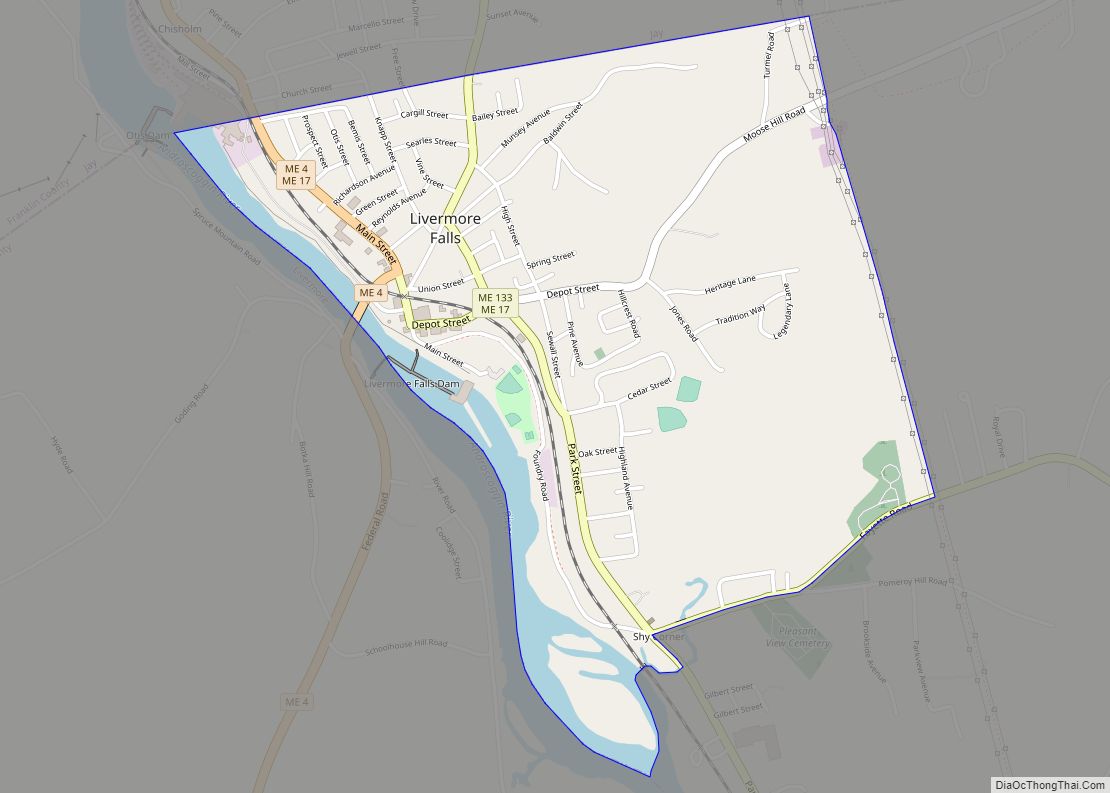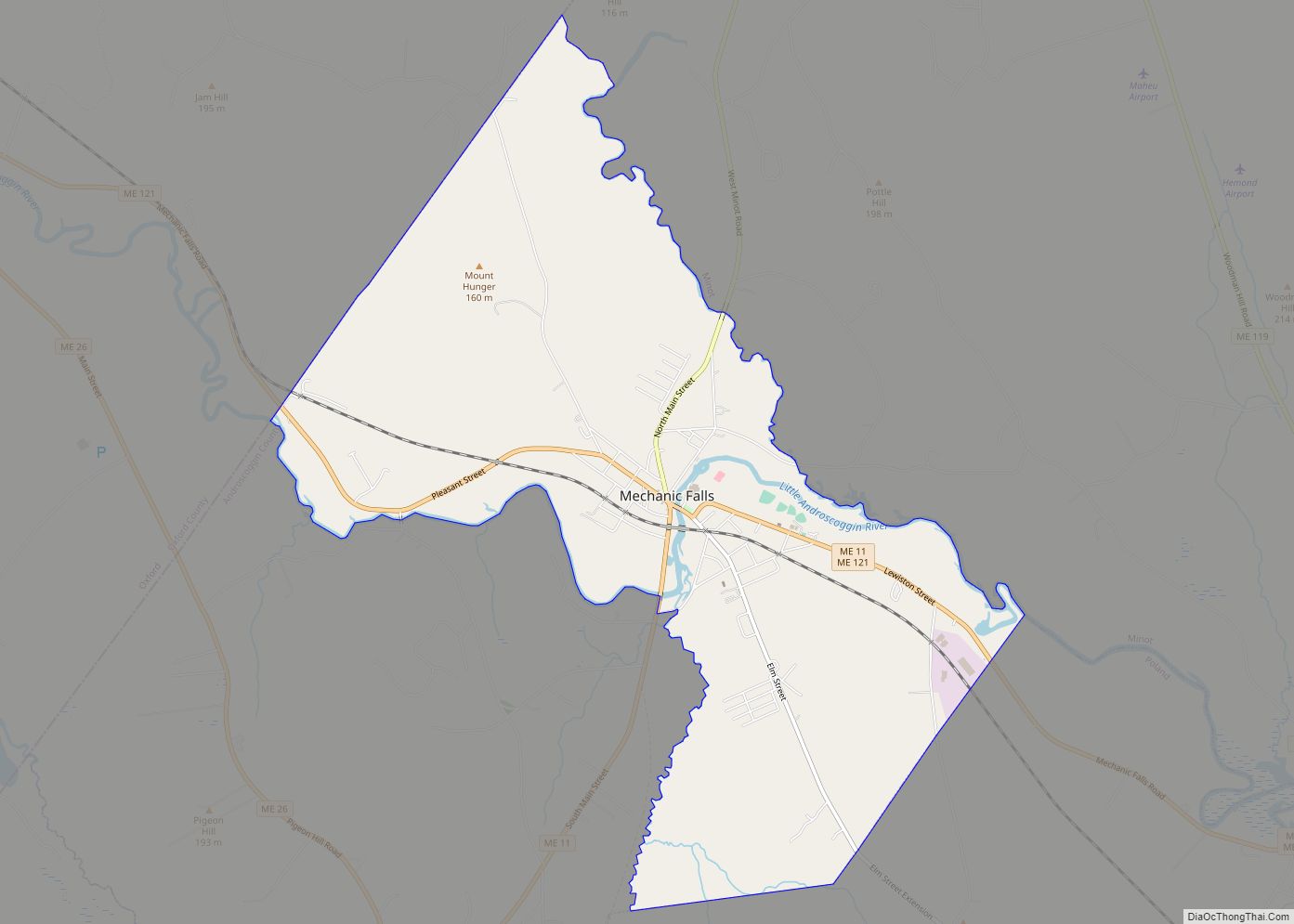Auburn is a city in south-central Maine within the United States. The city serves as the county seat of Androscoggin County. The population was 24,061 at the 2020 census. Auburn and its sister city Lewiston are known locally as the Twin Cities or Lewiston–Auburn (L–A).
| Name: | Auburn city |
|---|---|
| LSAD Code: | 25 |
| LSAD Description: | city (suffix) |
| State: | Maine |
| County: | Androscoggin County |
| Elevation: | 190 ft (58 m) |
| Total Area: | 65.74 sq mi (170.27 km²) |
| Land Area: | 59.34 sq mi (153.69 km²) |
| Water Area: | 6.40 sq mi (16.58 km²) |
| Total Population: | 24,061 |
| Population Density: | 405.48/sq mi (156.56/km²) |
| ZIP code: | 04210-04212 |
| Area code: | 207 |
| FIPS code: | 2302060 |
| GNISfeature ID: | 0561347 |
| Website: | www.auburnmaine.gov |
Online Interactive Map
Click on ![]() to view map in "full screen" mode.
to view map in "full screen" mode.
Auburn location map. Where is Auburn city?
History
The area was originally part of the Pejepscot Purchase, land bought in 1714 by an association of people from Boston and Portsmouth following the Treaty of Portsmouth, which brought peace between the Abenaki Indians and the settlers of present-day Maine. In 1736, however, the Massachusetts General Court granted a large section of the land to veterans of the 1690 Battle of Quebec. Conflicting claims led to prolonged litigation; consequently, settlement was delayed until after the French and Indian Wars.
Auburn was first settled in 1786 as part of Bakerstown, renamed Poland when it was incorporated by the Massachusetts General Court in 1795. It was then part of Minot, formed from parts of Poland and incorporated in 1802. Auburn would itself be formed from parts of Minot and incorporated on February 24, 1842. The name was apparently inspired by “Auburn”, a village (real or fictitious) featured in the 1770 poem “The Deserted Village” by Oliver Goldsmith. Originally part of Cumberland County, the town became county seat of Androscoggin County at its creation in 1854. By annexing land from towns around it, including part of Poland in 1852, Minot in 1873, and all of Danville (first called Pejepscot) in 1867, Auburn grew geographically into one of Maine’s largest municipalities. Incorporated a city on February 22, 1869, Auburn in 1917 would be the first city in the state to adopt a council-manager form of government.
Farms supplied grain and produce, but with construction of the bridge across the river to Lewiston in 1823, and especially after arrival of the Atlantic and St. Lawrence Railroad from Portland in January 1848, the community developed into a mill town. Mills were built to operate by water power from falls on the Androscoggin River and Little Androscoggin River. In 1835, the factory system of shoe manufacture originated at Auburn. Other firms manufactured cotton and woolen textiles, carriages, iron goods, bricks and furniture. The population in 1860 was only about 4,000 but by 1890 it was about 12,000, when its shoe factories attracted many French Canadian immigrants, many of whom arrived by train from Quebec. Steady population growth continued to about 1960 when the population was about 24,500.
In Auburn, shoe manufacturing became the dominant industry by the late 19th century. The City Seal, depicting a spindle with different types of shoes at each outside point, was designed when Auburn was positioning itself as the shoe manufacturing center of Maine in the mid-19th century. In 1917 one factory in Auburn was producing 75 percent of the world’s supply of white canvas shoes; however, after World War II the shoe industry began to decline, and between 1957 and 1961 the largest manufacturers closed their factories.
The area became noted in 1985 due to the plane crash that took the life of Samantha Smith.
Lewiston-Auburn Shoe Strike
In 1937, one of the largest labor disputes in Maine history occurred in Lewiston and Auburn. The Lewiston-Auburn Shoe Strike lasted from March to June and at its peak involved 4,000 to 5,000 workers on strike. After workers attempted to march across the Androscoggin River from Lewiston to Auburn, Governor Lewis Barrows sent in the Maine Army National Guard. Some labor leaders, CIO Secretary Powers Hapgood, were imprisoned for months after a Maine Supreme Judicial Court judge issued an injunction seeking to end the strike.
Main Street c. 1912
Old mill c. 1910
Court Street c. 1912
High Street in 1907
Auburn Road Map
Auburn city Satellite Map
Geography
Auburn is located at 44°5′N 70°14′W / 44.083°N 70.233°W / 44.083; -70.233 (44.089, −70.241). According to the United States Census Bureau, the city has a total area of 65.74 square miles (170.27 km), of which 59.33 square miles (153.66 km) is land and 6.41 square miles (16.60 km) is water. Auburn is drained by the Little Androscoggin River and Androscoggin River.
See also
Map of Maine State and its subdivision: Map of other states:- Alabama
- Alaska
- Arizona
- Arkansas
- California
- Colorado
- Connecticut
- Delaware
- District of Columbia
- Florida
- Georgia
- Hawaii
- Idaho
- Illinois
- Indiana
- Iowa
- Kansas
- Kentucky
- Louisiana
- Maine
- Maryland
- Massachusetts
- Michigan
- Minnesota
- Mississippi
- Missouri
- Montana
- Nebraska
- Nevada
- New Hampshire
- New Jersey
- New Mexico
- New York
- North Carolina
- North Dakota
- Ohio
- Oklahoma
- Oregon
- Pennsylvania
- Rhode Island
- South Carolina
- South Dakota
- Tennessee
- Texas
- Utah
- Vermont
- Virginia
- Washington
- West Virginia
- Wisconsin
- Wyoming
